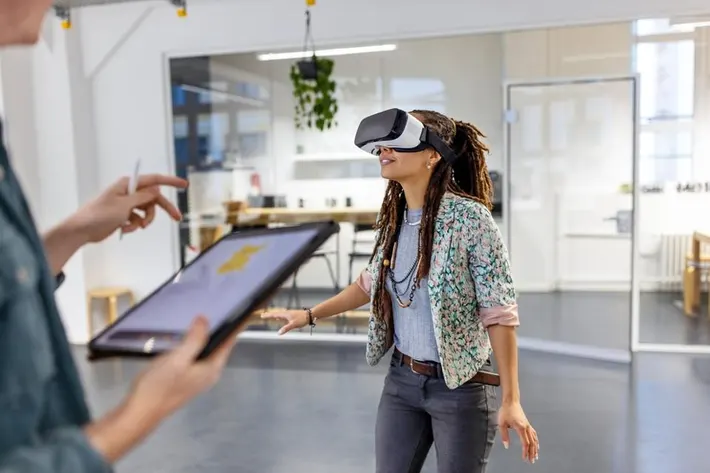A Guide to How VR Soft Skills Training Works

Virtual reality is just one member of a much larger family of technologies that also strive to bring simulated environments to life, a group that includes “mixed reality” headsets and, more recently, machine interfaces with the brain. Creating such training would appear to be a heavy lift—and it is, but so worth the effort.
Today, soft skills are quite possibly the most important skills in the fast-moving world of the corporate world, including communication styles, leadership, and emotional intelligence. Traditional teaching tools have not adequately prepared students for developing these essential skills. That’s where VR comes in.
This post uncovers step by step how virtual reality is being leveraged as an incredible training tool for soft skills—and why it’s a game-changer for the way modern companies work.
Identifying Training Needs
Soft skills establish the foundation for job effectiveness and career progression. It involves taking the lead, being empathetic, remaining flexible, listening actively, resolving conflict, and managing team dynamics. Broadly, hard skills vary by job. But soft skills travel between levels and from one industry to another.
The next step to realising the full potential of VR training is to establish which of these skills need to be trained within a particular team. This guarantees that training will be realistic, focused, and it will relate very closely to the working environment experience.
Prepare Your Virtual Training Environment
You need to choose the right tools to enter the cutting-edge field of VR training. Together with the VR workstations, the basic devices for VR simulations are going to be the head-mounted display, the motion-capture devices, and a powerful personal computer unit.
And finally, the headset is an essential input device, so it gives you truly immersive visuals that make the training feel real. An input device refers to any device that can sensibly facilitate information transmission from a user to a computer. Input devices such as those used in simulations allow the trainees to move and interact within the simulated environment, typically via their interactions with objects and virtual characters.
For these experiences, it requires a fast processor, sufficient RAM on your computer, and, most importantly, a good graphics card. Providing well-engineered hardware is one of the things that needs to be established to guarantee that realistic VR training scenarios will be properly delivered and used.
Active Participation in Virtual Scenarios
You’re not just watching; you’re training in virtual reality. You’ll be given a scenario by simulation, and you will have to speak, hear, think, and react on your feet. These are set up like workplace problems: providing feedback, resolving conflict, and running a meeting.
Prepare by using your camera and microphone before the session, participating in breakout activities, and engaging when necessary. And start by unsubscribing to distractions (mute your phone or email or your “you’ve got mail” signal) and clearing your schedule to be present and fully focused on your immersive experience.
Use the Rest in Training
Now that you have practised in the virtual space, it’s time to put those skills into action in real life. Whether we’re leading a team or managing a difficult conversation, that confidence will radiate. The aim of VR training—as training meant to develop soft skills—is to make them feel natural so that they can be instinctively accessed and acted upon.
“Determine what you need to learn, and then also follow what you learn that drives new skills and ideas,” she says. Give top priority to anything that’s in service to your short-term and long-term goals, your personal and professional growth, and competitiveness.
Reality Starts After VR
In an age of automation, the only skills you need are the ones that make you genuinely human. And because soft skills are so habit- and experience-based, real behavioural change requires both commitment and sustained effort.
Like any other skill, soft skills get better with practice, and that’s where vr soft skills training comes in. Immersive learning is an effective tool to quickly practice, gain confidence in, and hone key people skills faster than traditional methods.


